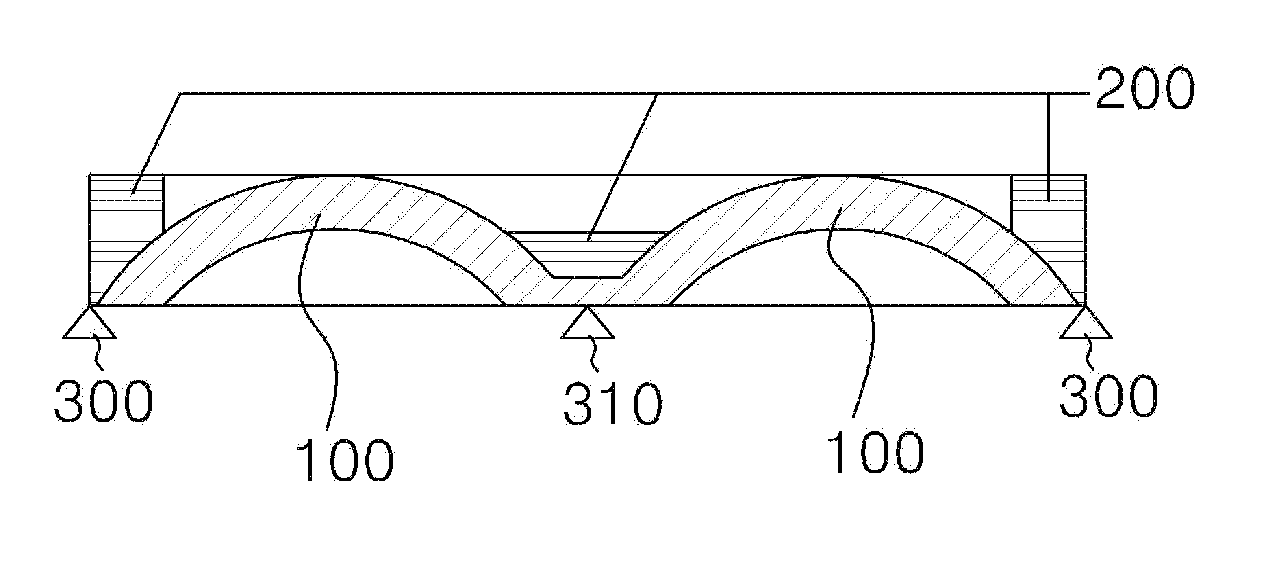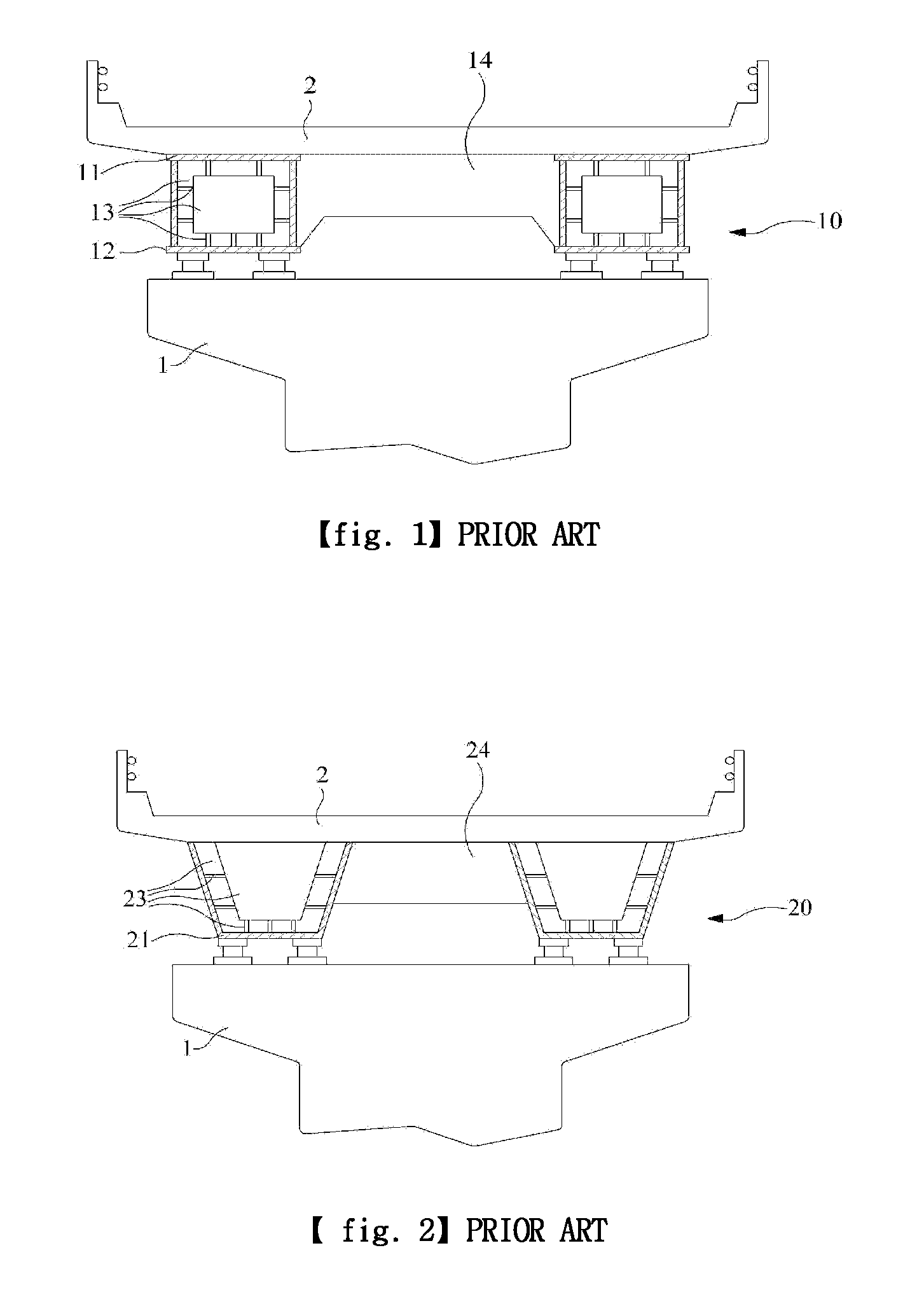Composite girder for bridge construction
a composite girder and bridge technology, applied in bridges, arch-type bridges, building roofs, etc., can solve the problems of increased construction costs increased weight of steel box girders, weak steel box girders against vibration and droop, etc., to reduce manufacturing costs, reduce construction costs, and overcome compression and tension stress
- Summary
- Abstract
- Description
- Claims
- Application Information
AI Technical Summary
Benefits of technology
Problems solved by technology
Method used
Image
Examples
Embodiment Construction
[0040]A composite girder for bridge construction according to a preferred embodiment of the present invention will be described in detail with reference to the accompanying drawings.
[0041]The present invention has a structure in which steel materials and concrete used in a bridge, a building or the like are integrally formed to increase resistance against warping, a tension section (lower flange) of the girder, which receives a tensioning force, uses steel materials so as to economically improve capability of resisting warping, and a compression section (upper flange) of the girder, which receives a compressing force, uses concrete having excellent compression strength as compared with its price.
[0042]The present invention provides specific structures of the girder. In the girder receiving a uniformly distributed a load, the compression section in which steel materials and concrete are integrally composed together is formed, so that it is possible to minimize shearing stress between...
PUM
 Login to View More
Login to View More Abstract
Description
Claims
Application Information
 Login to View More
Login to View More - R&D
- Intellectual Property
- Life Sciences
- Materials
- Tech Scout
- Unparalleled Data Quality
- Higher Quality Content
- 60% Fewer Hallucinations
Browse by: Latest US Patents, China's latest patents, Technical Efficacy Thesaurus, Application Domain, Technology Topic, Popular Technical Reports.
© 2025 PatSnap. All rights reserved.Legal|Privacy policy|Modern Slavery Act Transparency Statement|Sitemap|About US| Contact US: help@patsnap.com



